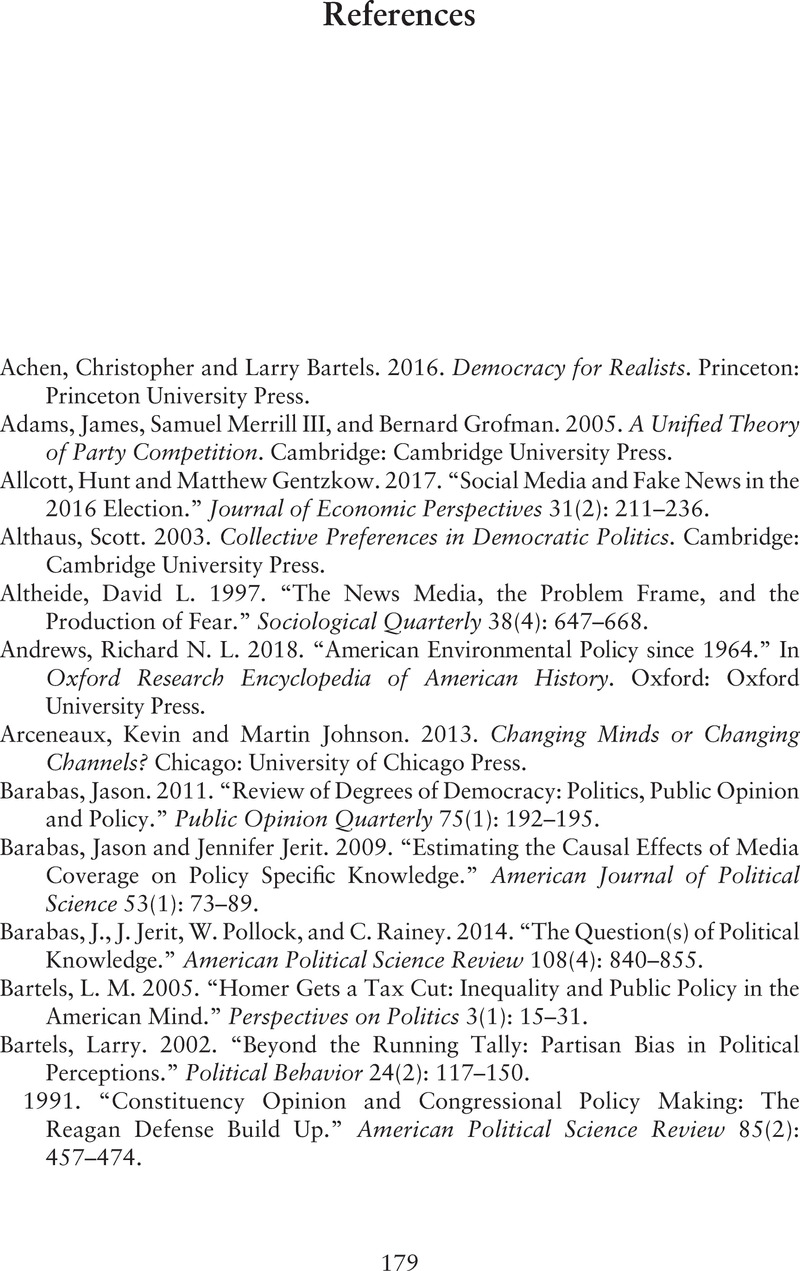Book contents
- Information and Democracy
- Communication, Society and Politics
- Information and Democracy
- Copyright page
- Contents
- Figures
- Tables
- Preface
- 1 Media in Representative Democracy
- 2 Public Responsiveness to Media
- 3 Measuring the “Media Signal”
- 4 Alternative Measures of the Media Policy Signal
- 5 The Accuracy of Media Coverage
- 6 Policy, the Media, and the Public
- 7 Diagnosing and Exploring Dynamics
- 8 Policy and the Media
- References
- Index
- Other Books in the Series (continued from page iii)
- References
References
Published online by Cambridge University Press: 20 January 2022
- Information and Democracy
- Communication, Society and Politics
- Information and Democracy
- Copyright page
- Contents
- Figures
- Tables
- Preface
- 1 Media in Representative Democracy
- 2 Public Responsiveness to Media
- 3 Measuring the “Media Signal”
- 4 Alternative Measures of the Media Policy Signal
- 5 The Accuracy of Media Coverage
- 6 Policy, the Media, and the Public
- 7 Diagnosing and Exploring Dynamics
- 8 Policy and the Media
- References
- Index
- Other Books in the Series (continued from page iii)
- References
Summary

- Type
- Chapter
- Information
- Information and DemocracyPublic Policy in the News, pp. 179 - 192Publisher: Cambridge University PressPrint publication year: 2022

